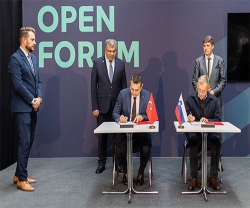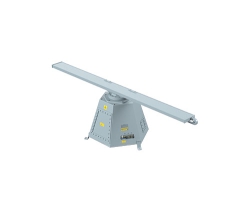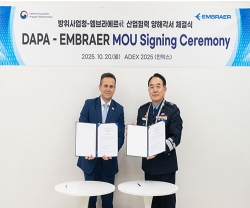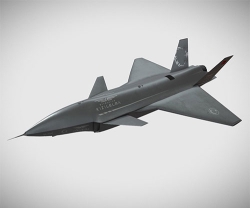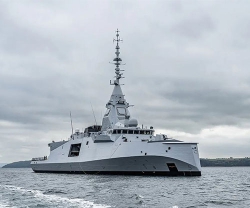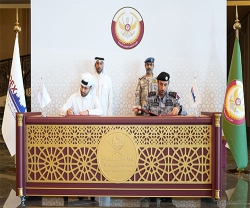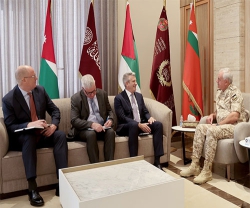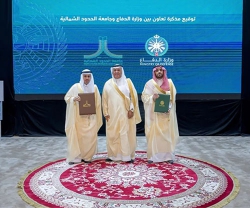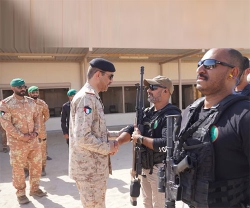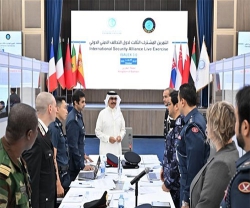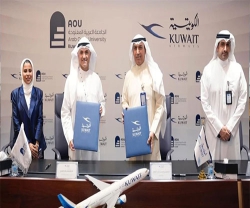Leonardo and Italian railway infrastructure manager Rete Ferroviaria Italiana (RFI) have signed a partnership agreement to implement a joint Military Mobility project. This EU initiative will add to existing infrastructure and digital capabilities, facilitating the swift and large-scale movement of military personnel within and beyond Europe, even at short notice and on a large scale, ensuring safe, sustainable, and resilient transportation capacity.
Leonardo and RFI plan to identify the architecture and functions of the integrated digital platform for managing Military Mobility traffic to transport military material in ordinary and extraordinary circumstances using dual-use infrastructure. The platform will incorporate innovative solutions for accessing heterogeneous data sources and optimising their use through automated processes.
Under the partnership agreement, Leonardo will leverage its expertise in Global Security and Monitoring, supported by advanced AI techniques, in several areas: surveying and monitoring dual-use infrastructure, modelling complex infrastructures and services, and simulating and optimising complex networks. Leonardo’s Global Security Operation Centre (SOC) will also ensure high data protection standards by employing proprietary Threat Intelligence solutions (characterising and analysing potential cyber threats through the collection and analysis of data from open sources) and Live Endpoint Security (for the management and security of devices connected with the IT and OT networks).
High-Performance Computing (HPC) with davinci-1, one of the most powerful supercomputers in the aerospace, defence and security sectors, will enable the management of vast amounts of data. The platform will also incorporate advanced features based on satellite services, including those provided by COSMO-SkyMed, and will use a secure communication infrastructure. This infrastructure will be interoperable with various network types, such as TETRA, LTE, and 4G/5G, to ensure high levels of service and security.
The agreement entails using specialised expertise in security and railway transport. It involves integrating RFI's railway traffic management application components with the other air and land mobility platforms required to generate a context of technological interoperability based on principles of highly robust security.
Leonardo is a leading global Aerospace, Defence and Security (AD&S) company. With 51,000 employees worldwide, it operates in the fields of Helicopters, Electronics, Aircraft, Cyber & Security and Space, and is a key partner in major international programmes including Eurofighter, NH-90, FREMM, GCAP and Eurodrone.
Leonardo has significant industrial capabilities in Italy, the UK, Poland, and the US and also operates through subsidiaries, joint ventures and stakes, including Leonardo DRS (72.3%), MBDA (25%), ATR (50%), Hensoldt (22,8%), Telespazio (67%), Thales Alenia Space (33%) and Avio (29.6%).
Listed on the Milan Stock Exchange (LDO), Leonardo reported new orders of €17.3 billion in 2022, with an order backlog of €37.5 billion and consolidated revenues of €14.7 billion. The company is included in the MIB ESG index and has been part of the Dow Jones Sustainability Indices (DJSI) since 2010.
Rete Ferroviaria Italiana SpA, was founded on 1 July 2001 in response to the need to separate the network manager from the provider of transport services. RFI is responsible for keeping the railway infrastructure in full working order, allowing over 9,000 passenger trains and tons of freight to run on them every day in complete safety.
As of 2022, RFI is the lead company of the FS Italiane Group’s Infrastructure Hub, which also includes Anas, Italferr and Ferrovie Sud Est. The Hub manages 180 billion euro in investments from today to 2031 (with 125 billion for railways and 55 billion for roads), 16,800 kilometres of railway lines (counting over 1,600 tunnels, 23,000 bridges and viaducts and 2,200 stations) plus 32,000 kilometres of roads (with over 2,000 tunnels, 18,000 bridges and viaducts and 1,200 roadman’s houses).
The aim is to upgrade and integrate rail and road infrastructure, rendering them both more modern, resilient, interconnected and accessible to all. This synergy must be there right from the planning phase of the works, defining and specialising the roles of the various infrastructure, but also in those for the design, technological development and maintenance.



